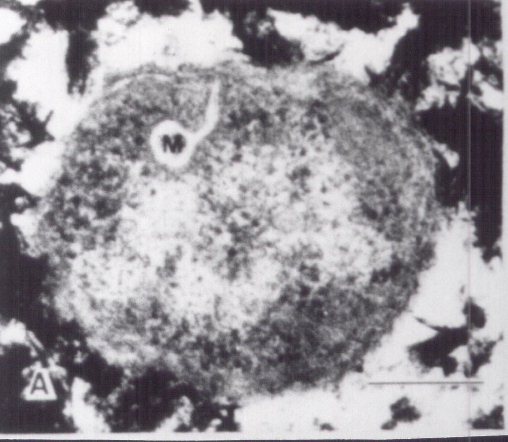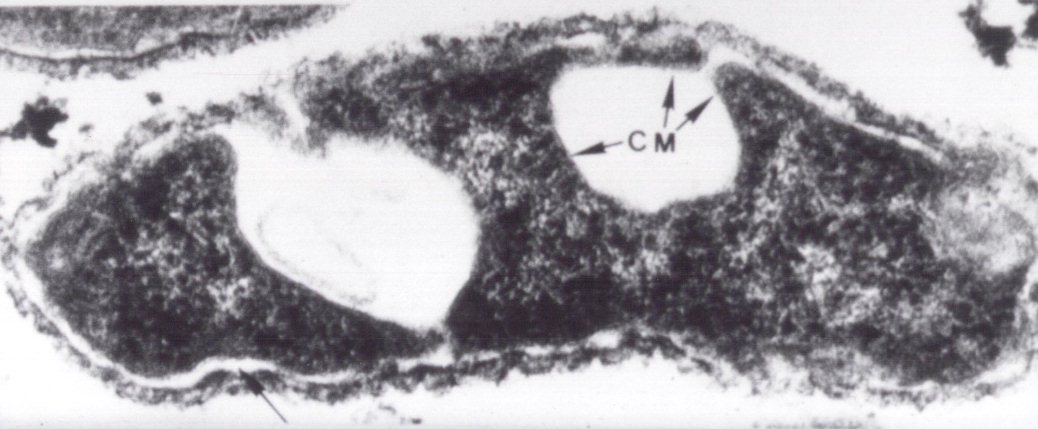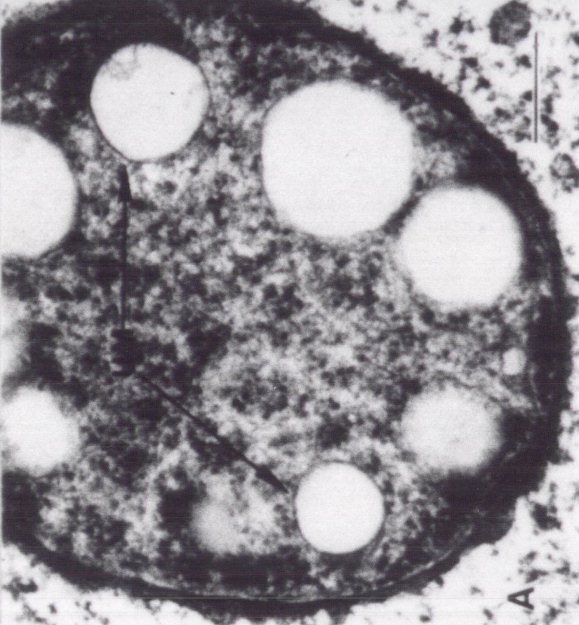
(We ask the reader's forbearance for a few moments while this page loads. There are three black-and-white microphotographs on it, courtesy of the University of Texas at Tyler, where these pictures where taken as part of a cooperative service on the part of UT. Pictures take longer to load than text on the Internet; it's the nature of the beast! And the larger the pictures, the longer they take.)

Figure A: Hydrocarbon constituents being engorged by a bacterial cell. The engorged material will eventually form an inclusion known as a mesosome (M). This photo shows the uptake of the oil. Note the indention of the bacterial membrane (in the upper left) where oil is being taken into the cell's interior.

Figure B: Another photograph showing oil uptake by
a cell. The engorged mesosomes are enclosed by the
cell membrane (CM), as denoted by the arrow points.
Figure C: Hydrocarbon droplets have been completely engorged by this cell. Each droplet is encased by a single membrane structure, known as an ultramembrane (UM). The droplets will be converted by the bacterium to fatty acids which later will be converted to energy to sustain the bacterium.
For more information on the nature of microbial activity
in ETTL's bioremediation technique, contact ETTL's
Steve Kennedy
Return to ETTL Bioremediation and Other Site Remediation Services Page
Return to ETTL Home Page
Return to Handy Index